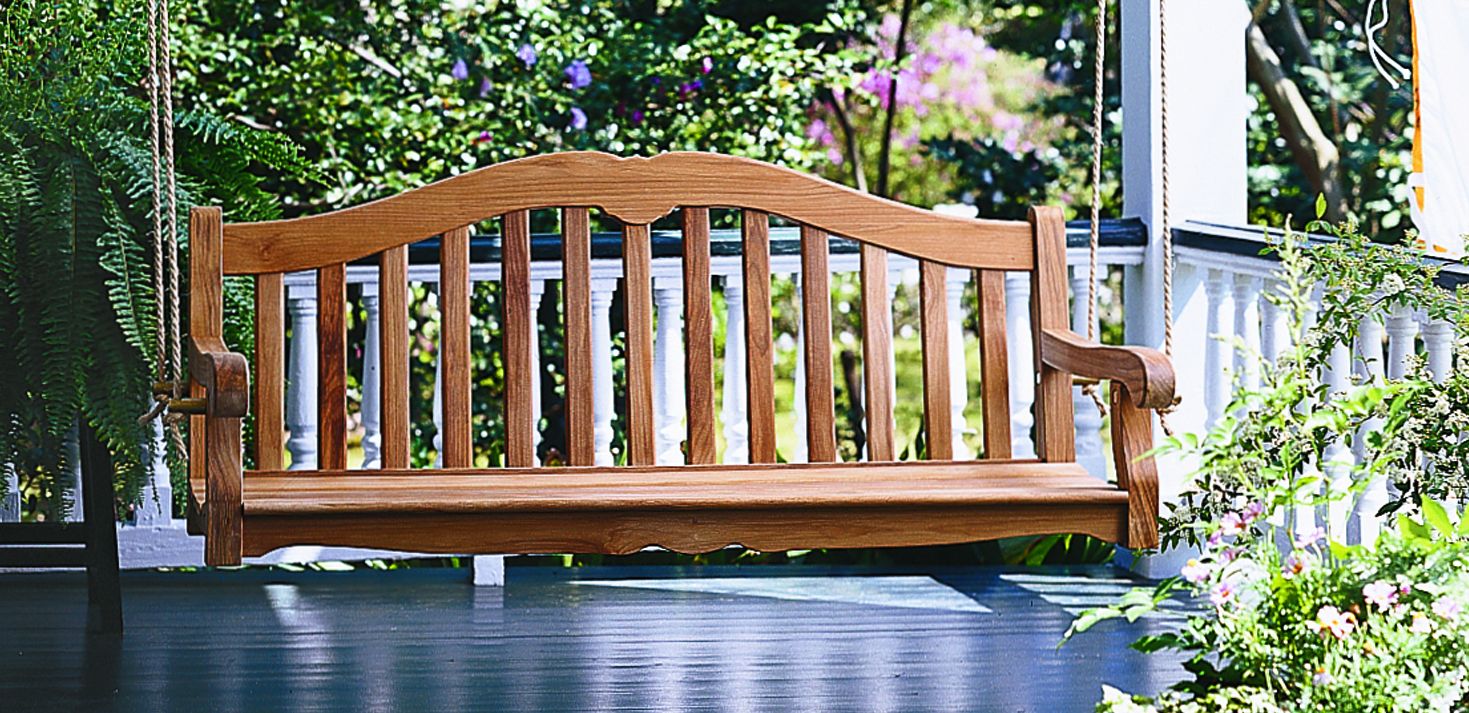Project details
Skill
Cost
Estimated Time
Nobody says you have to build your own porch swing. You could buy one, as easy as icebox pie.
But wait.
Why not make it yourself? Because if ever a task offered its own reward, this one does, implying libertine leisure even as it demands intense rigor. Were you crafty enough, you could start from scratch—the dimensions measured twice and cut once, the mortise made just so, the tenon to match, the flathead brass screws micrometrically countersunk, the curve of a seat rail defined by pencil, formed by saw, and completed with drawknife and plane.
Let’s say you’re insufficiently crafty. But let’s also say you’re willing to hit the halfway mark between scratch-built and store-bought. Do an online search for “porch swing” and “kit,” and marvel at the results: big, little, medium, freestanding, chain-mounted, oak, cedar, redwood, teak, Arts and Crafts, Mission, Adirondack, plantation.
The box arrives, and with it so does a bout of jitters. But keep at it. You’ll get your groove, tools, and user melding in an almost musical pattern, a melody of accomplishment riding the rhythm of repetition—screwgun whir, mallet strike, sandpaper scritch, clamp creak—and finally silence, settling over what began as a notion and now has three dimensions.
Step 1
Ready, Set, Swing
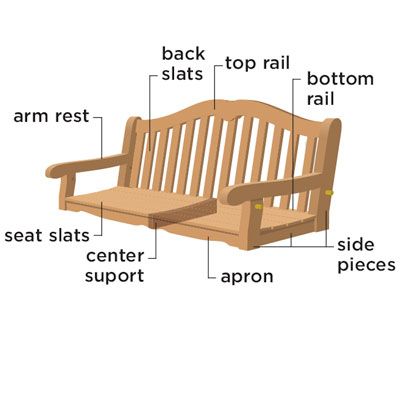
For this building project, we selected a 5-foot-long swing made from stout planks of solid teak, milled into elegant, comfortable curves as lovely to admire as they are inviting to the touch. No cutting is needed, so assembly takes only a few hours. And the effort is doubly repaid: in savings (this swing costs hundreds of dollars less than one put together in a factory) and in satisfaction. You’ve created an heirloom you can proudly say you built yourself.
Before tackling final assembly, first “dry-fit” all of the pieces without glue. This will be time well spent. You’ll know in advance if the kit has all of its parts; you can sand down any tenon that isn’t sliding into its mortise; and you’ll lessen the chance of making a mistake that’s harder to correct later.
Step 2
Apply Glue to the Tenons
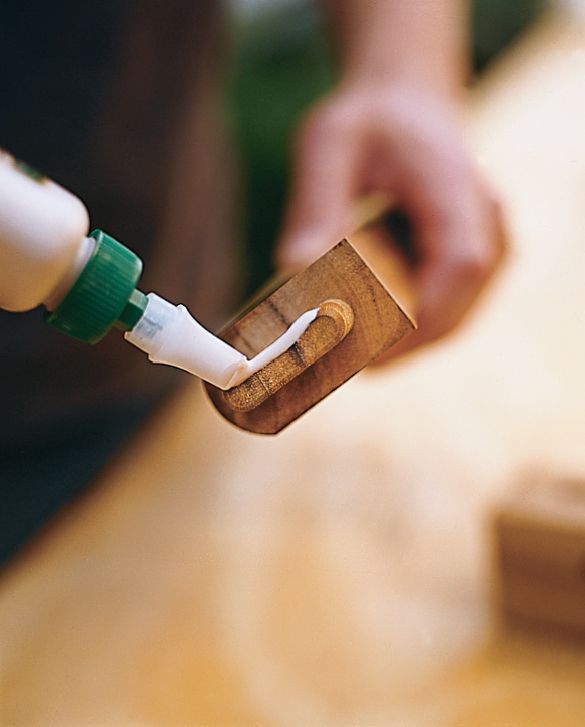
This project relies almost exclusively on mortise-and-tenon joinery, one of the oldest and strongest methods for joining wood. The tenon (the tongue) fits into the mortise (the slot). There are 15 such joints on this swing, and each one follows the same three-step procedure.
A waterproof polyvinyl acetate (PVA) glue is recommended; we used Titebond III. Also swab glue on the inside of the mortise.
Step 3
Slide the Tenon Into the Mortise
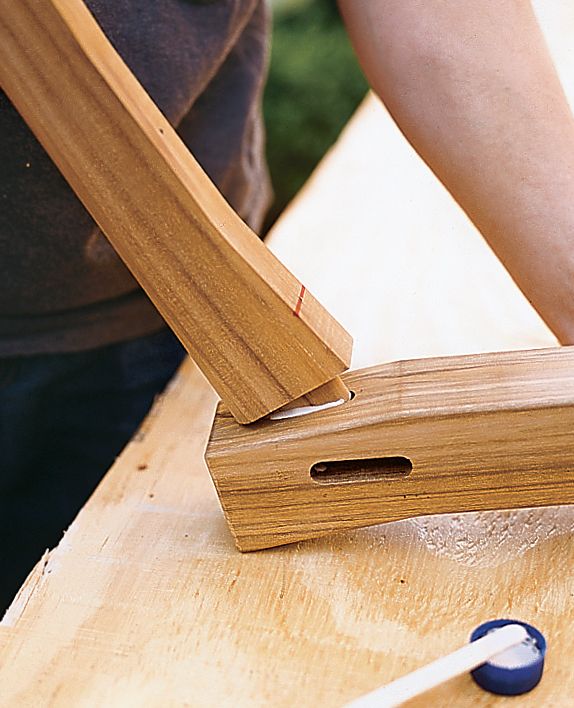
The tenon’s “shoulders”—the shelf of exposed end grain at the tenon’s base—automatically bring the pieces into proper alignment.
Step 4
Fasten the Tenon

Drive the screws into the screw holes and through the tenon. This eliminates the need for clamps or any waiting for the glue to dry. For maximum durability, use stainless steel screws.
Tip: Clean up. Take a damp rag and immediately wipe away any glue that squeezes out of the joint. If glue dries on the wood, it will leave a film that will resist any protective oil treatments and weather to a different color from the surrounding surfaces.
Step 5
Assemble the Back
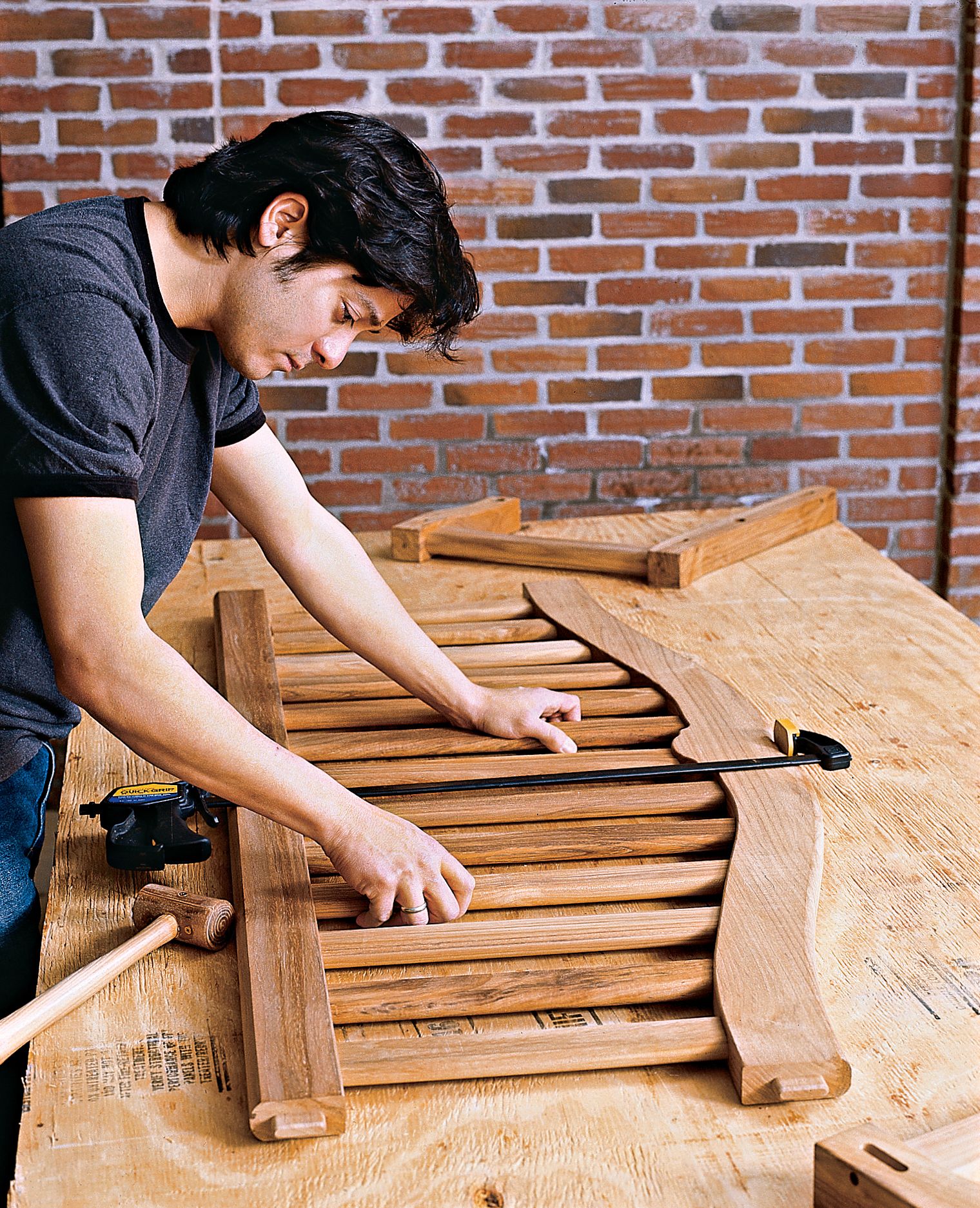
First, glue and insert the ends of the seat-back slats into the mortises in the curved top rail. Then glue the other ends of the slats into the mortises in the bottom rails.
Tip: Fit each slat into the bottom rail a little at a time. To help push them in all the way, gradually tighten a bar clamp or two positioned on the rails.
Step 6
Order of Assembly: Sides
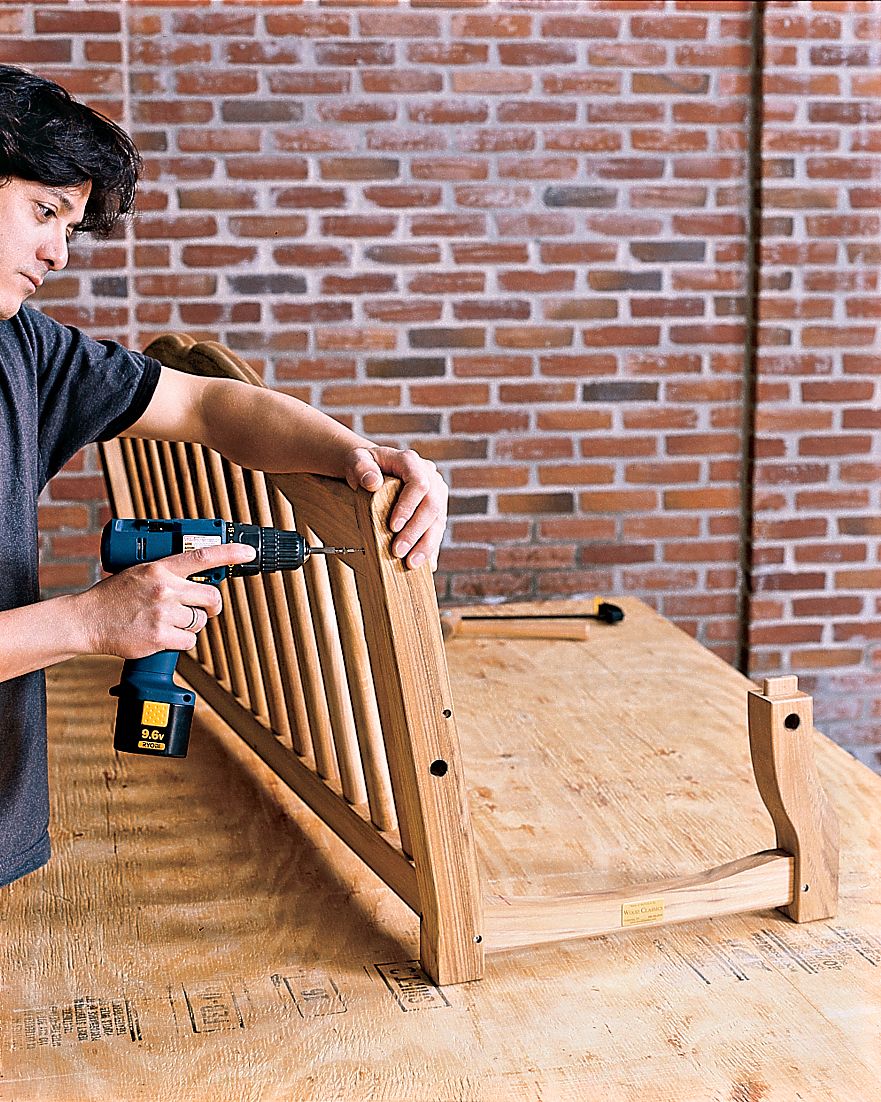
Glue and screw together each of the side pieces, minus the arms, so they don’t interfere with the installation of the seat slats. Then attach each of the assembled side pieces to the tenons on the back’s rails. ttom rail a little at a time. To help push them in all the way, gradually tighten a bar clamp or two positioned on the rails.
Step 7
Order of Assembly: Seat
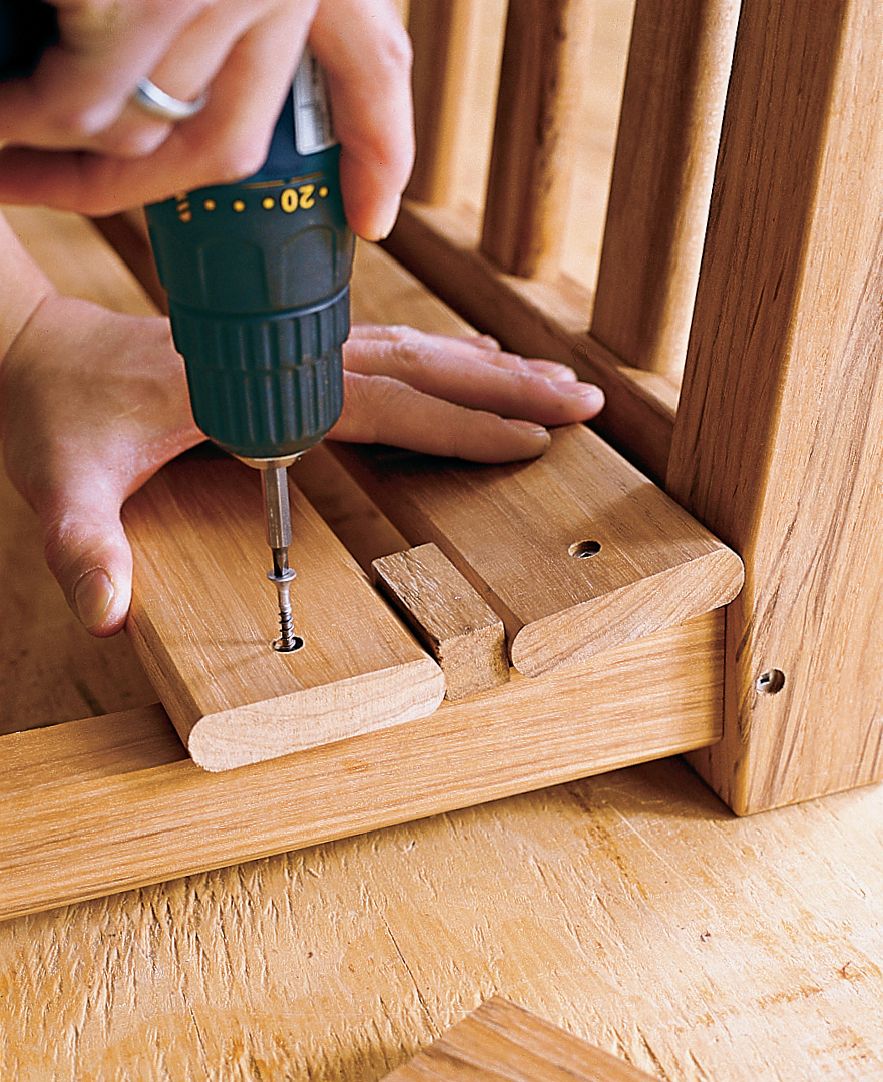
Glue and screw the rest of the framework that supports the seat slats: the center-seat support and the apron that connects the two side pieces in front. Apply a bead of glue on the underside of the first slat at each screw hole, then lay the slat against the side pieces; align the slat’s ends flush with the side pieces. Screw the slat down. For all of the remaining slats, use spacer blocks to set an even gap between each slat and a scrap piece to align the end of each new slat with the one before it.
Step 8
Order of Assembly: Arm Rest
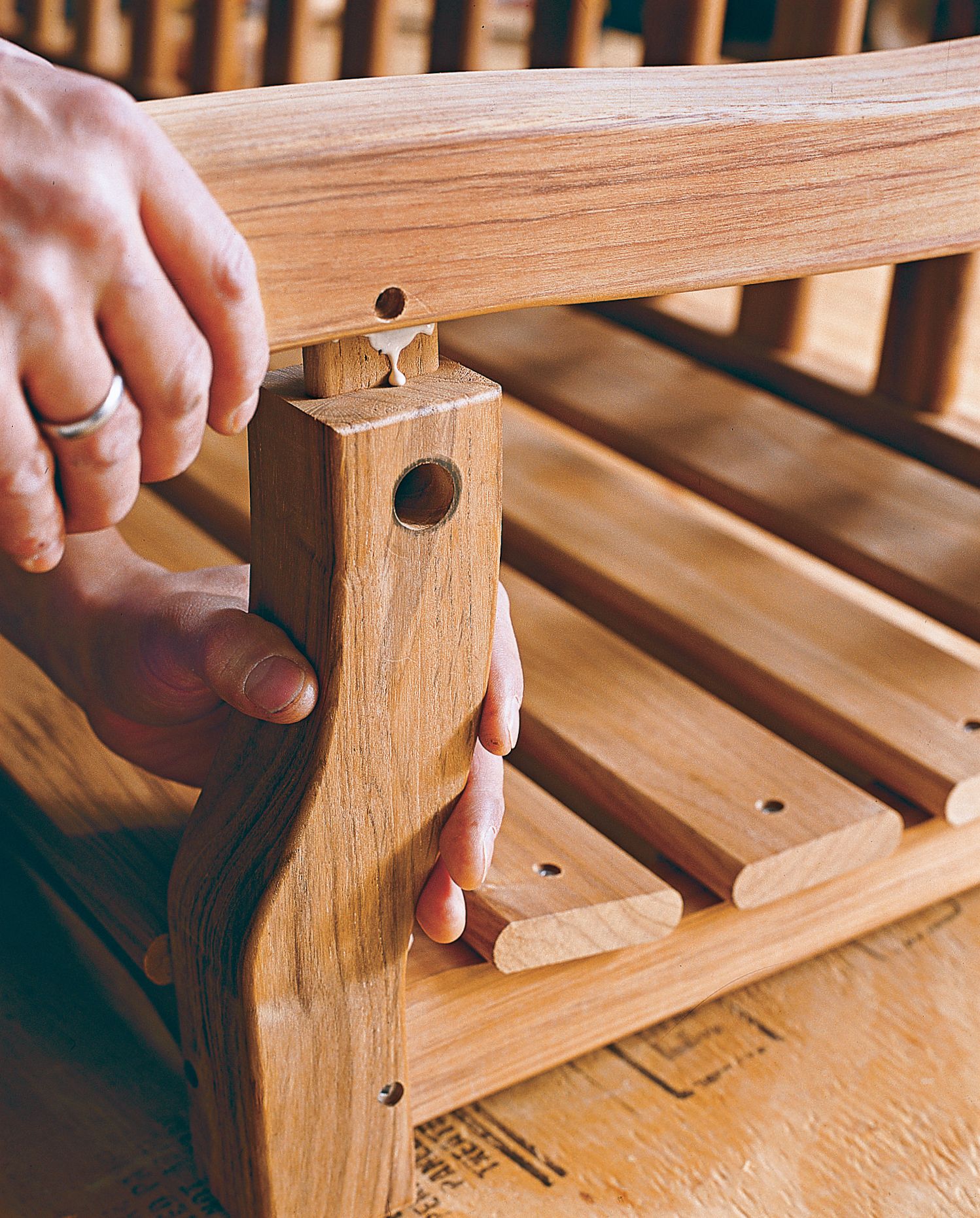
Glue and screw each arm onto the side pieces. The swing is now ready for a few finishing touches, shown on the next page.
Step 9
Attach support bolts and fill screw holes
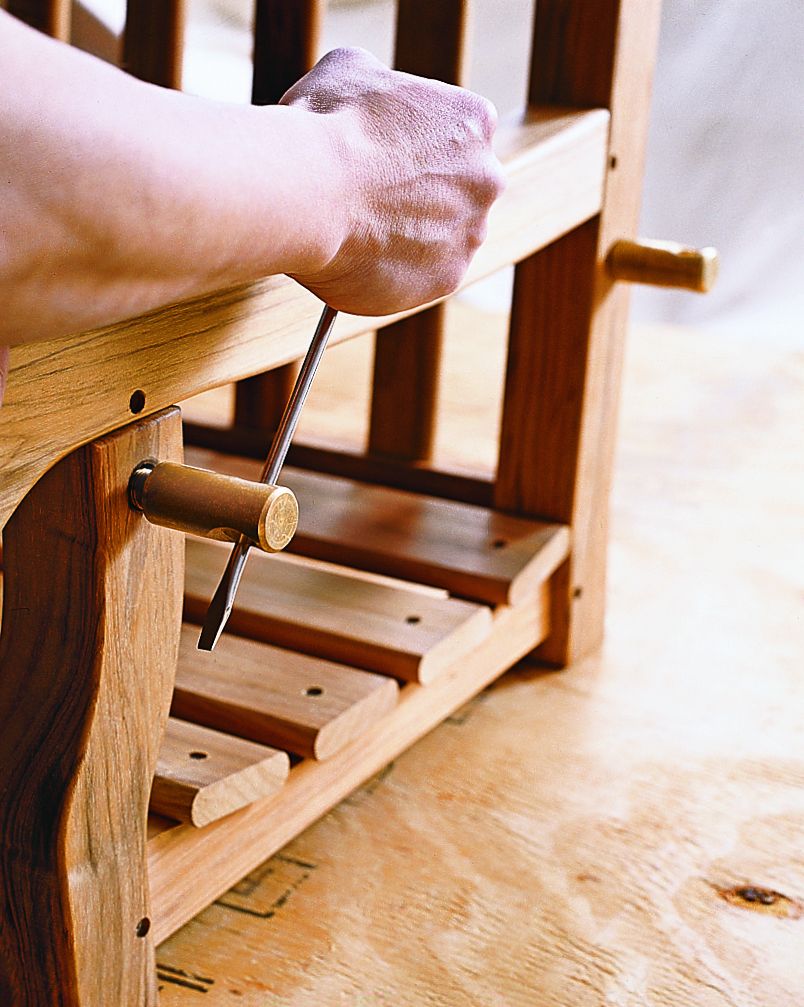
Insert a brass bolt, the head facing inward, through each of the four holes in the side pieces. Apply a thread-locking glue such as Loctite to the bolts and twist on the brass rope nuts. Tighten until the head of the bolt sinks flush with the wood. A screwdriver stuck through the rope hole can provide the necessary leverage. Leave each rope hole facing up. Next, fill each screw hole with a teak plug dabbed with glue. Set the plug with a rawhide mallet, wipe up the glue, then sand it flush with 80-grit sandpaper.
Step 10
Apply Finish
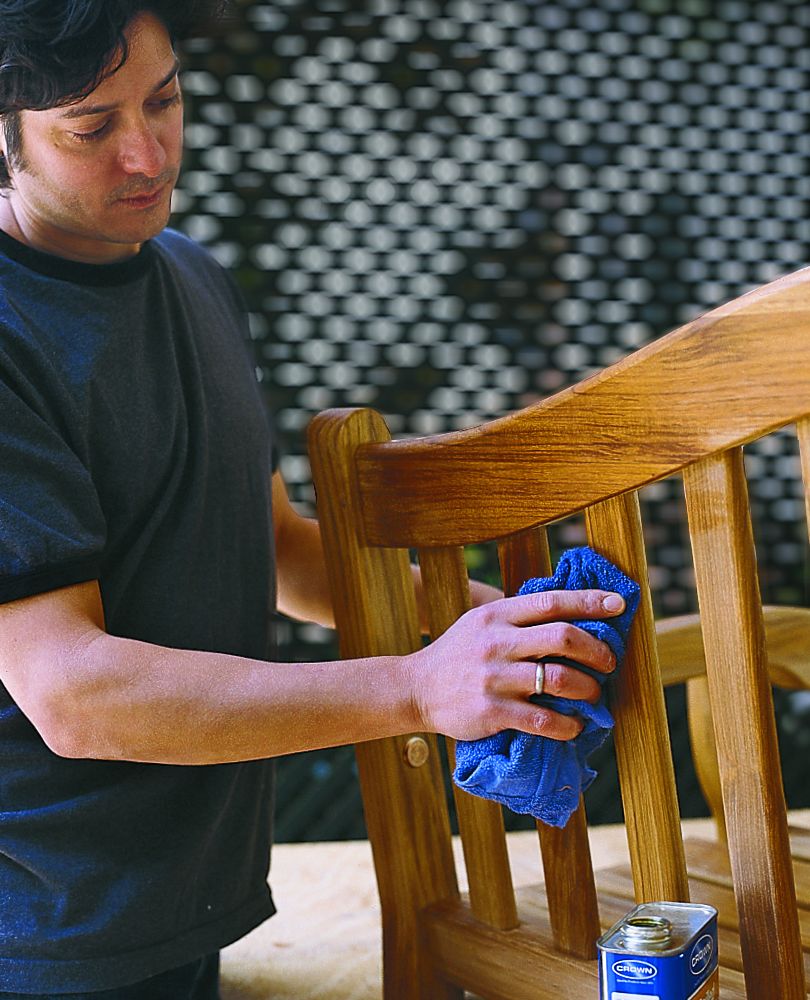
Hand-sand the entire swing with 120-grit paper, paying particular attention to the curved top rail and the arms. In time, teak will weather to a silvery gray. To keep a rich, natural wood look, wipe a teak oil with UV protection (and without linseed oil) onto every surface, wait 15 minutes for it to soak in, then wipe again with a clean rag to remove any buildup. Repeat at the beginning and end of each porch-swing season. Teak can also be painted, but then you run the risk of chips, scrapes, and peeling.
Step 11
The Right Way to Hang It: Rope or Chain?
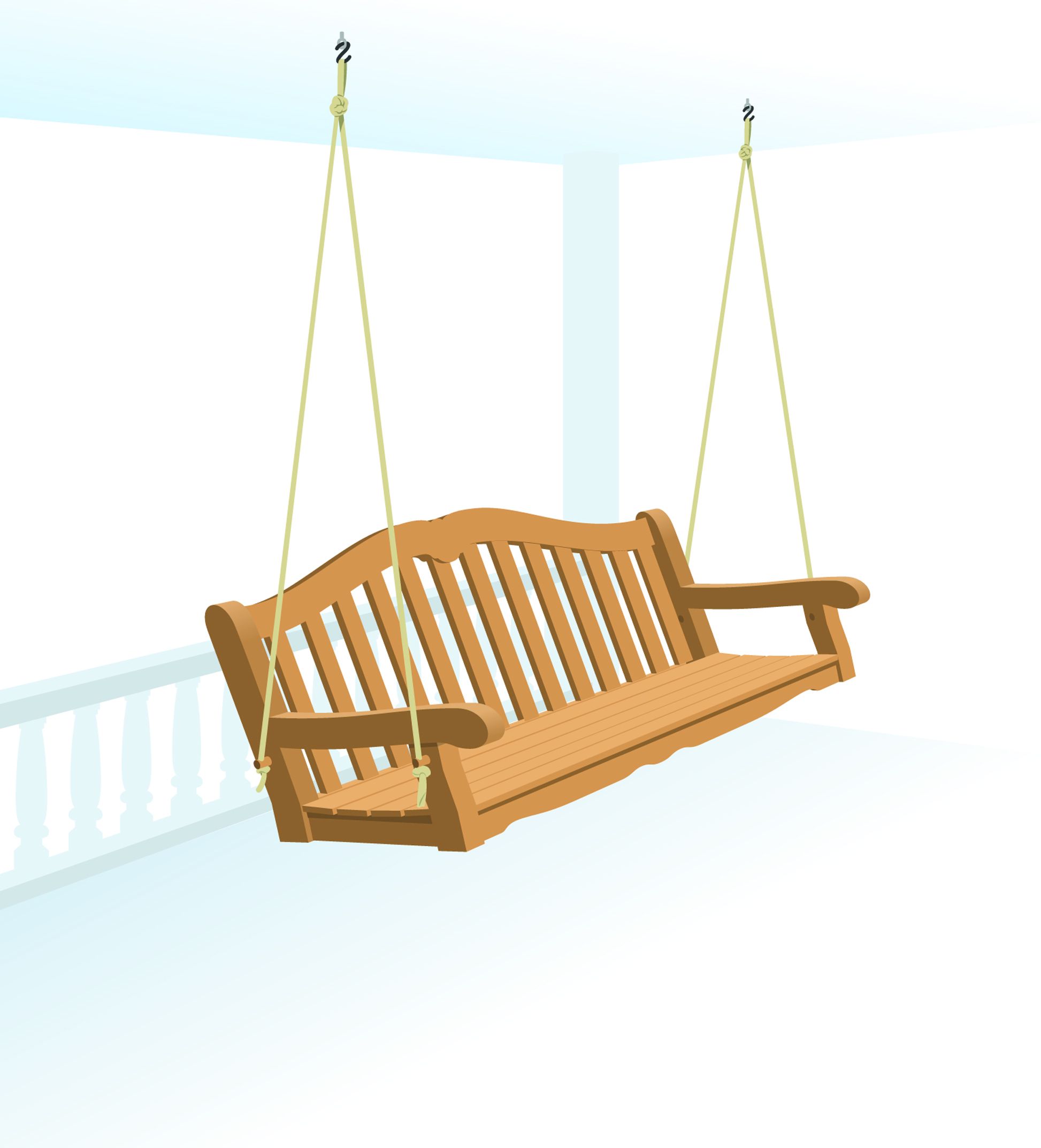
Steel chain is easy to adjust and lasts a long time, as long as it’s galvanized. Rope is warm to the touch and won’t rust or react with wood. A good nylon rope won’t deteriorate and even has some “give” for added comfort. To make sure your rope is strong enough, add the weight of the swing to the maximum weight you expect it to hold at one time (600 pounds is a reasonable estimate). That total should be less than or equal to the rope’s safe working load printed on the package.
Swing room
While most porch swingers are relatively sedate, you should allow at least 2 feet of clearance at the ends and 30 inches front and back to avoid colliding with the house, the porch railings, or people.
Step 12
Anchoring Hardware
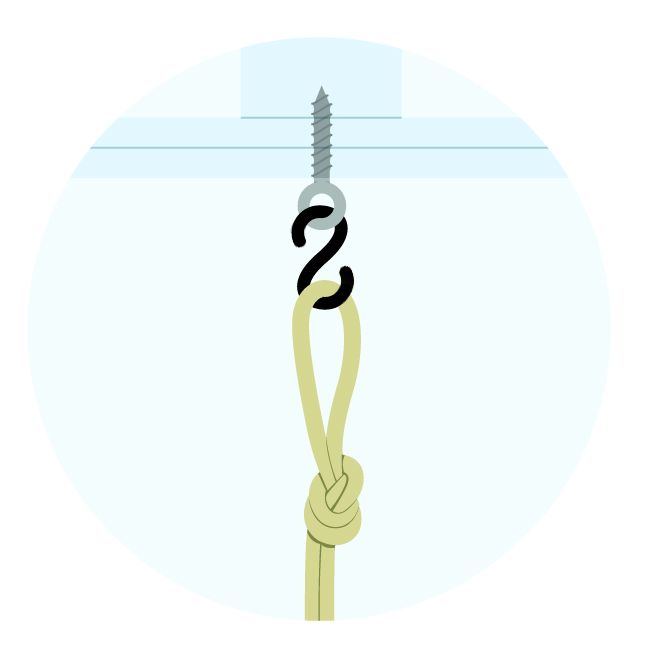
On porches without ceilings, just bore a hole all the way through the joist and insert a ½-inch galvanized eyebolt with a locknut. Put washers at both ends and tighten down the locknut completely.
On porches with ceilings, use a ½-inch by 5½-inch-long galvanized lag eyescrew with a shoulder. Embed each bolt’s threads completely into solid wood. (Drill a pilot hole first to prevent splitting.)
Swinging hardware
Connect the rope or chain to the eyebolts with S-hooks, which minimize squeaks and reduce chafing or wear.
Step 13
Height
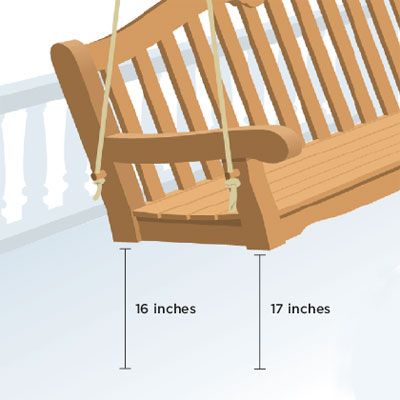
Treat the swing like a chair so that a seated adult’s feet won’t hang in the air. For maximum comfort, tilt the swing slightly so that the back of the seat is about an inch lower than the front.
Step 14
Rope Knots: Upper End
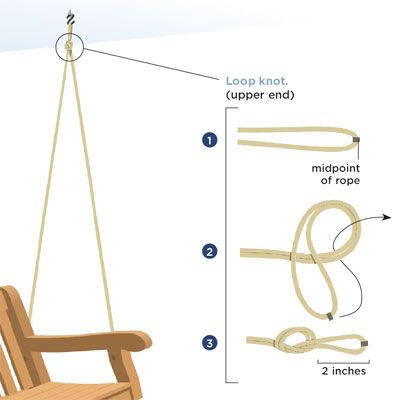
Loop Knot
Step 15
Rope Knot: Lower End
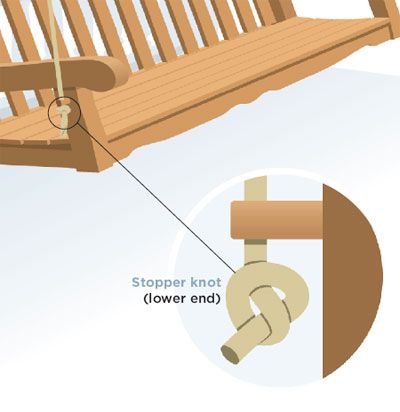
Stopper Knot
Step 16
Fine Tuning
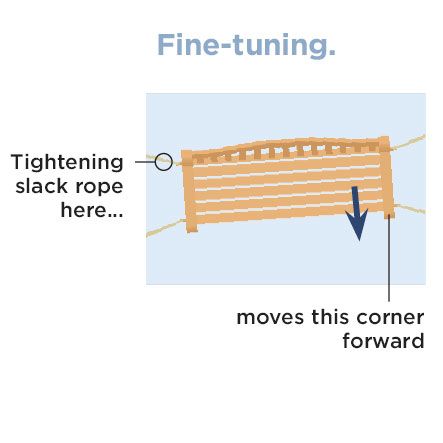
A swing that’s hanging askew can easily be set right by snugging up the slack ropes. Pull up on each one in turn, then tighten the rope that straightens the swing with the least amount of effort.
